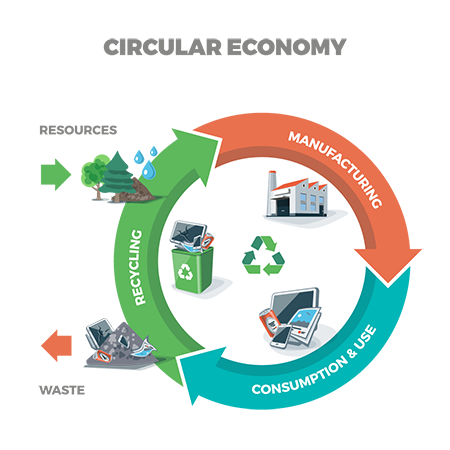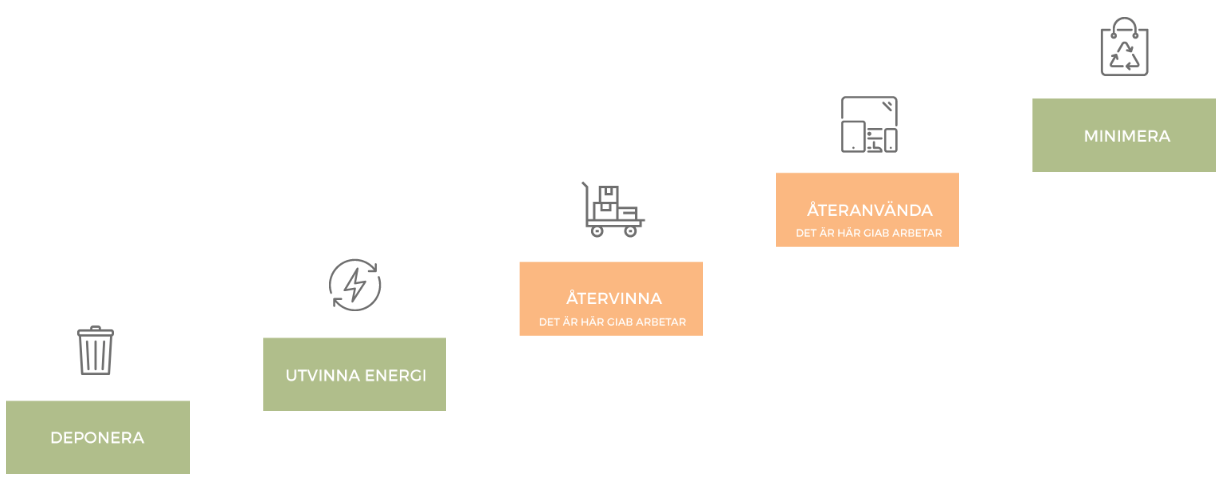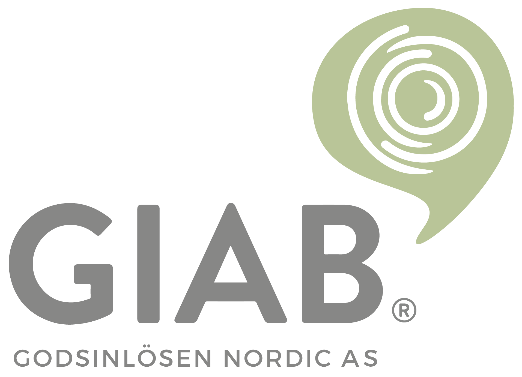GIAB has expert knowledge of the circular economy and is experienced in the implementation of circular business models and processes in many different industries. But what is the circular economy?
WHAT IS THE CIRCULAR ECONOMY?
The circular economy (CE) is a positive, solutions-based concept aimed at tackling the challenges presented by the situation with our global resources. It is an economic system in which resource flows are designed in accordance with circular principles – exactly like the cyclical pattern found within nature. Its opposite is the linear economy such as we have today, whereby natural resources are extracted, refined and made into products which, following a short period of use, are converted into waste. In a circular economy, there is a shift of focus from ownership to usage, and from quantity to quality. In simple terms, we consumers shall own fewer things which we will use for longer and, instead of selling products, manufacturers shall now sell services.
Today’s consumption and production methods generate large quantities of waste. If we are to achieve the objectives for the prevention of waste and realise our vision of increased reuse, it is essential that we separate continued economic growth from consumption. Incinerating valuable – and usually finite – resources is an unsustainable strategy, and intervention is now being demanded at higher levels of the waste hierarchy.
A circular economy contains the necessary conditions to be able to break the connection between economic growth and negative environmental impact. Business models and products are designed so as to be able to be reused and remanufactured. The concept of waste no longer exists – instead, it is regarded as a resource. In a circular economy, all processes are powered by renewable energy forms.

DESIGN OF CIRCULAR BUSINESS MODELS
In today’s throw-away culture, the majority of products are programmed to stop working after a certain period of time and are designed in such a way that any repairs will be either difficult to perform or too expensive to be worthwhile. If a company instead chooses to base its business model upon a circular approach, with a focus on functional sales, these conditions change. Instead of selling a product, the manufacturer is now selling a service, which means that the product doesn’t leave the possession of the manufacturer. By utilising the right design, the conditions are created that allow closed material cycles where, after use, materials and products can be brought back into the production process as a new resource. The fact that the product is never sold means that high-quality, health-promoting materials and components with long service lives become a profitable investment for the manufacturer. In addition, more long-term relationships with the customers are established. It will also be more profitable for the manufacturer to invest in the production of modular-built products with replaceable components, making it possible to perform repairs, updates and remanufacturing.
The waste staircase

RETURNS LOGISTICS
One of the major challenges of converting to a circular economy concerns logistical solutions. The foundation of today’s logistics systems is tailored to a linear model – things are sold and transported from a warehouse to an end customer or retailer. With a transformation from the sale of items to the sale of services, where ownership of the product remains with the manufacturer, there is a great need for a system of logistics that is adapted to the returning of products.
GIAB’s working processes are tailored to our circular business model, and our work with returns logistics is crucial to our success. By means of effective partnership with transport companies and logistics companies, we are able to guarantee swift and secure logistics solutions that generate advantages both for us and for our customers.








